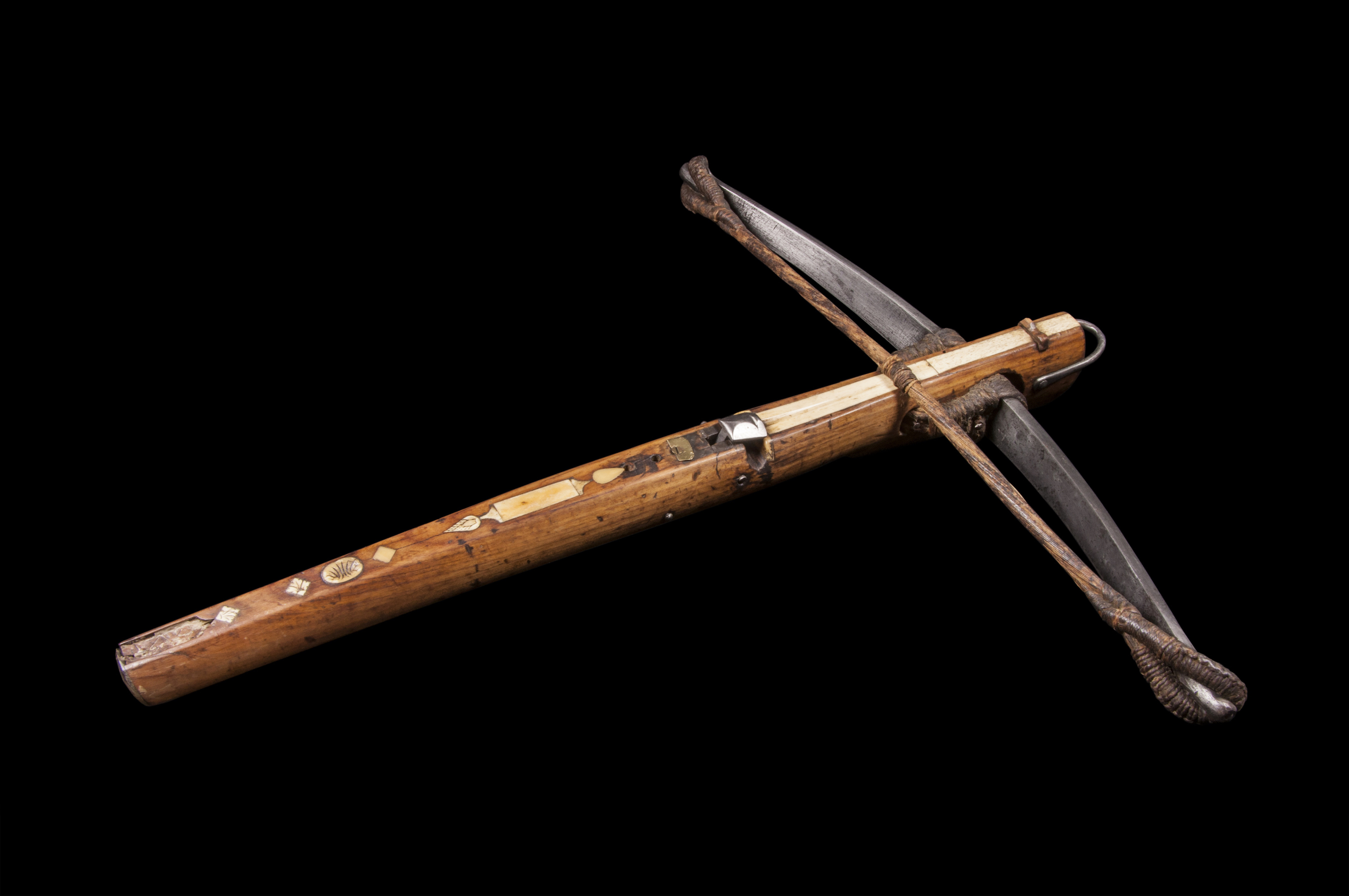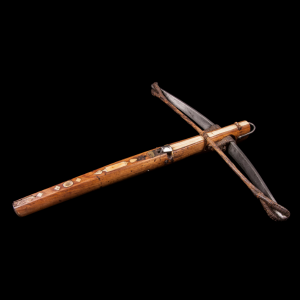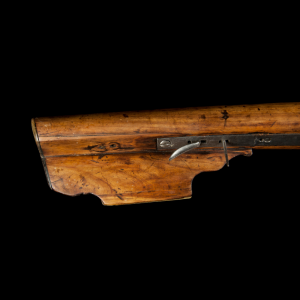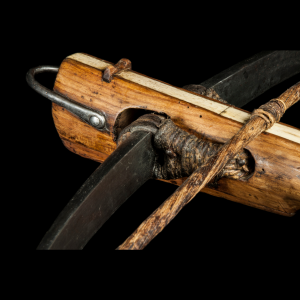Crossbow
Author: Unknown
Origin: India
Dating: 16th century
Material: Wood, Steel, Ivory & Animals’ Tendons
Dimensions (cm): 72,5 x 62,5 x 9
Weight: 3130 g
Inv. no.: PD1059 / MAS 310 / A.G. 21
A crossbow with a wooden body with ivory inlays and an iron bow. The body outspreads at the stock. The upper end holds a suspension hook. Some pieces of the arrow retention string are missing.
It is difficult to trace the origins of this type of weapon for several civilizations used it. However, it is believed that crossbows were invented in China, long before the Christian era. In the Middle Ages, the use of crossbows increased substantially and, in European armies, crossbowmen often occupied a central position in order to attack before the advance of the cavalry. It could discharge projectiles like bolts, quarrels, darts, clay bullets, stones, lead spheres, among other.
With a range of up to 250 meters, this weapon was progressively improved, namely to quicken the reloading of ammunition and, for a long time, it coexisted with firearms in the battlefield.
As it was such a deadly weapon, there was a first attempt to ban its use by the Pope Innocent II in 1139 and, posteriorly, by the Pope Innocent III. In 1630, Pope Urban VIII forbade its use among Christians but allowed it in the war against “Infidels”.






